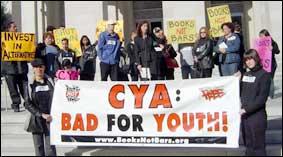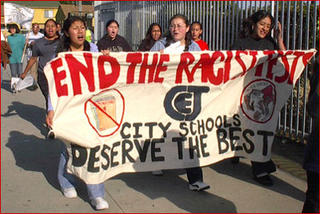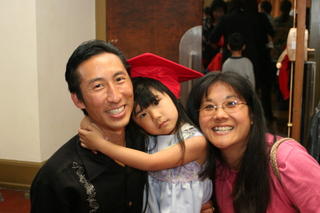 Teachers Speak Out About CYA
Teachers Speak Out About CYAOn the 40th anniversary of the Watts Uprisings ['riots'] grassroots groups are converging on Washington to build a stronger movement for racial and economic justice. For more info check out Family Members and Friends of Incarcerated People of Alabama. Over 2 million imprisioned!.
TEACHING MOMENT: See also the great LA Weekly coverage of the anniverary -
Joe Hicks' commentary Great Perspective from the Watts Labor Action Committee on the need for 'self-determination' for our communities.
ALLIANCE BUILDING/MOVEMENT BUILDING?
Education Not Incarceration, with the support of Critical Resistance and Books Not Bars, was successful in winning stronger teacher support for their various campaigns at the National Education Association representative assembly gathering in LA recently. Congrats to the groups working to build more unity among teachers, students and grassroots groups and a stronger movement for educational justice, and to reform the prison industrial complex.
For more info on these efforts contact Jonah Zern of Education Not Incarceration.
----------------
On another front - Books Not BarsBooks Not Bars (BNB) is fighting to redirect California's public resources away from punishment for young people and towards opportunity.Currently, their "Alternatives for Youth" Campaign is fighting to close the California Youth Authority (CYA) eight youth prisons. They also coordinate a statewide network for parents of incarcerated youth, called Families for Books Not Bars. And, they have a youth organizing and leadership development program called Let's Get Free.
From Books Not Bars:
Mass incarceration is a crisis in California.
For decades, the state has poured money into its abusive, costly, and ineffective prison system, claiming this will make neighborhoods safe from crime. So, what do we have to show for this? The largest, and most expensive, prison system in the nation. A prison system that warehouses and abuses people, the vast majority of whom are from low-income communities of color. And streets and neighborhoods that are no safer than they were twenty years ago. BNB has a different vision for how to make our communities safe and healthy. We know California’s current prison system was never meant to truly provide for the safety and well being of low income communities and communities of color. We also know what these communities need instead. The government should invest in opportunity -- not punishment. The safest communities are the ones with the best schools and the most jobs -- not the ones with the biggest police departments or the most jail cells. This is the future that California deserves. It is the future that Books Not Bars is fighting for.
------------------------
The National Education Association (NEA) – an organization representing 2.7 million educational professionals – wrote a letter to Governor Schwarzenegger expressing deep concerns about the CYA
July 25, 2005
Dear Governor Schwarzenegger:
On behalf of the 2.7 million members of the National Education Association (NEA), I am writing to advise you of our great concern for inmates of the California Youth Authority (CYA).As education professionals, we are dedicated to opening the doors of opportunity for all children. While we are committed to the goal of great public schools for every child, we recognize that every child is not law abiding. However, we do not believe that children who run afoul of the law should also forfeit their opportunity to receive a quality education which greatly improves their chances of becoming productive citizens.Currently, the state of California spends only $7,692 per student for education, while spending $80,000 to $100,000 to house a child as an inmate of the CYA. By contrast, the state of Missouri spends half that amount on juvenile offenders, while housing them in small, supportive centers. Missouri's 15 percent recidivism rate, compared to your state's rate of 91 percent is further proof that there are successful alternative approaches to rehabilitating youthful offenders.As you consider transformation of the CYA, we would encourage you to look toward replicating the efforts of states like Missouri. For the state of California to not follow the lead of other states in restructuring your program in a manner that would provide youthful offenders with an environment leading to rehabilitation and greater opportunity for success as adults would lead us to recommend closure of the CYA.As you know, NEA members work in every level of public education -- from pre-school to university graduate programs. We are committed to the education of all, especially our youth. We urge you to stand with us by improving the opportunities for inmates of the CYA, and sending an important message that emphasizes education over incarceration.
Sincerely,
Reg Weaver
NEA President














